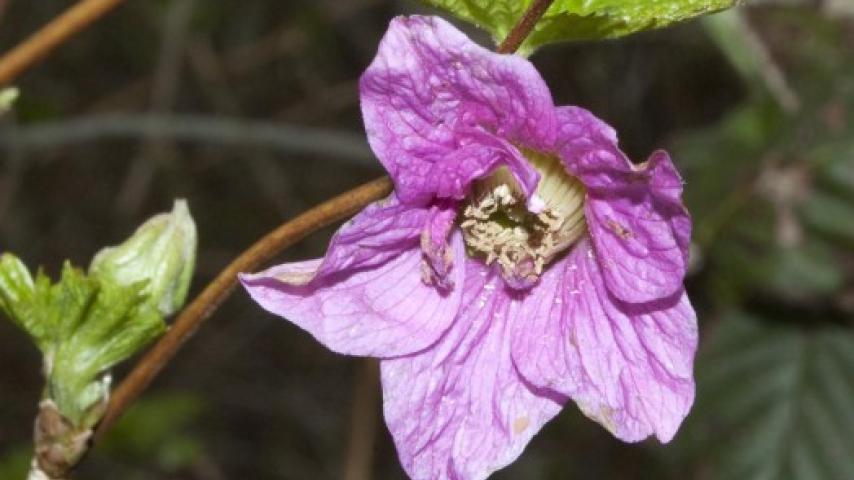Salmonberry (Rubus spectabilis)
Salmonberry is a very common understory shrub in lowland wet forests of the Pacific Northwest.

KINGDOM Plantae - PHYLUM Anthophyta - CLASS Eudicotyledonae - ORDER Rosales - FAMILY Rosaceae
The largest plants reach 4 m in height and often form dense monospecific thickets. The branching stems are less strongly armed than most members of the blackberry group, but anyone who tries to penetrate the thickets will quickly learn that there are plenty of prickles in there. The species grows well in disturbed sites and is thus assured of long-term abundance.
The deciduous leaves have three shiny green pointed, furrowed, and toothed leaflets. The flowers are rather large, five-petalled and bright pink-red. They are unusual in the blackberry genus, which tends to produce white flowers, and this is probably because they bloom quite early in spring, when not many insects are around. Instead, they are often visited and pollinated by Rufous Hummingbirds, which migrate north at the time of Salmonberry flowering.
The hummers share the flowers with bumblebees, typical insect pollinators, which also visit them at the beginning of the season. By coevolving with both the birds and the bees, the plant assures itself of pollination during the cool spring when many other plants have not yet bloomed.
The fruits are dimorphic, with a yellow-orange (salmon) morph, and a red morph. Frequencies of the two morphs vary geographically. Birds generally prefer the red berries over salmon colored berries; however, the selective agent that maintains this unusual polymorphism is unknown. The raspberry-like fruits develop quickly and are eaten by birds and mammals, including humans. Salmonberries were much loved by native people, eaten along with the salmon from which they were named. The tasty growing shoots were eaten raw or steamed early in spring.

